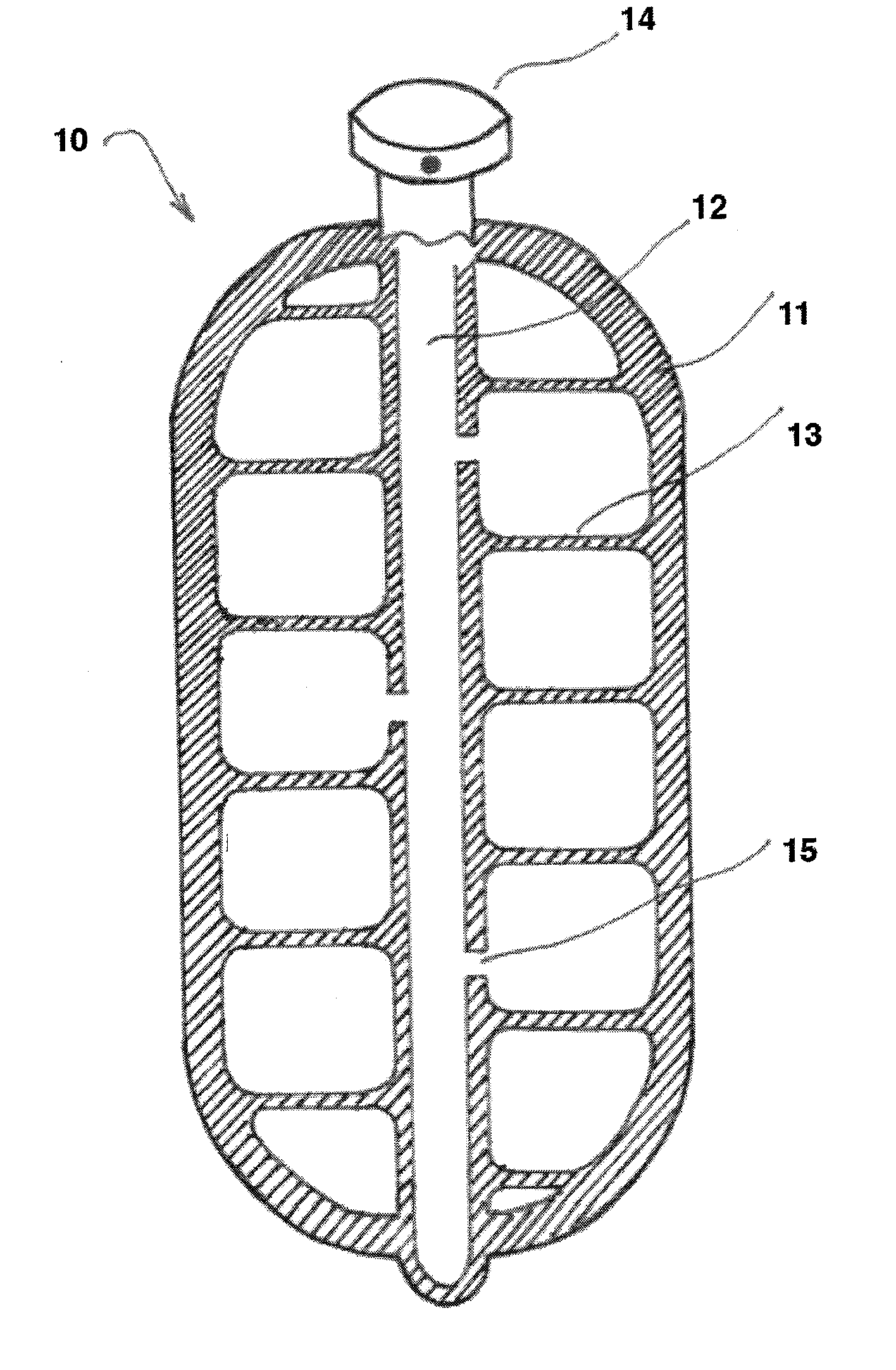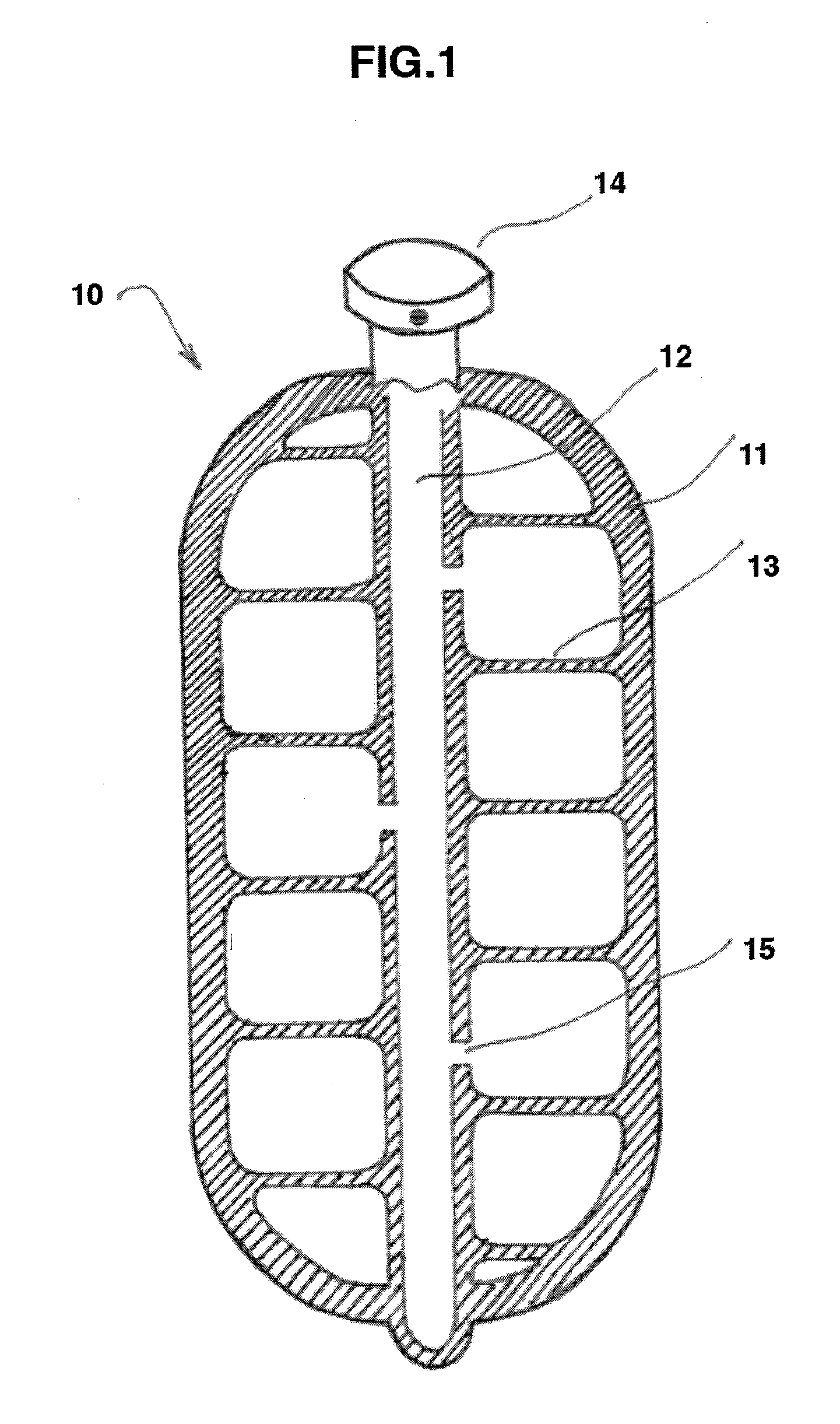Pressure Vessels, Design and Method of Manufacturing Using Additive Printing
a technology of additive printing and pressure vessels, applied in the field of pressure vessels, can solve the problems of not considering the possibility of pressure vessels, and achieve the effects of improving construction, increasing pressure differentials, and increasing production efficiency
- Summary
- Abstract
- Description
- Claims
- Application Information
AI Technical Summary
Benefits of technology
Problems solved by technology
Method used
Image
Examples
embodiment 10
[0061]FIG. 1 shows a vertical cross-section of a first preferred embodiment 10 of the inventive pressure vessel. This embodiment comprises a generally cylindrical, hermetically sealed pressure vessel 10, having an external wall structure 11 and an internal supportive structure which includes a central supporting element 12 connected to wall 11 and bonds 13, which, in this embodiment, are in the form of spokes or traction rods. Bonds 13 perform an important function of transmitting the internal pressure forces applied to wall 11 to the central supporting element 12, which, in turn, transmits and distributes such pressure forces to the opposite side of the wall and vice versa. This allows vessel 10 to withhold much higher pressures as the same vessel made without such an internal supportive structure.
[0062]Bonds 13 can be distributed within vessel 10 either randomly or, in a preferred embodiment, using a configuration calculated to optimize force equalization within vessel 10. The emb...
embodiment 20
[0067]FIG. 4 shows the same embodiment 20 in a horizontal section. Here, we can better see wall 21, central supporting element 22, and disks 23, which play the role of bonds connecting central supporting element 22 with wall 21. Perforations 26 are omitted from FIG. 4 for ease of reference. A filling and release device, such as a valve 24 is situated on the top of vessel 20 communicating with central supporting element 22, which in turn, communicates with the interior of vessel 20 via holes 25.
[0068]FIG. 5 illustrates another embodiment of an internal supportive structure 30 of a vessel, this embodiment having a screw-like shape with one or more bonds 33 providing strong ties between the airtight walls of the vessel (not shown here) and a central supporting element 32, which is connected to the exterior environment with a filling and release device 34. Bonds 33 are perforated with openings 35 and are attached to a wall of the vessel forming one strong body capable of withstanding hi...
PUM
| Property | Measurement | Unit |
|---|---|---|
| pressures | aaaaa | aaaaa |
| pressure | aaaaa | aaaaa |
| pressure | aaaaa | aaaaa |
Abstract
Description
Claims
Application Information
 Login to View More
Login to View More - R&D
- Intellectual Property
- Life Sciences
- Materials
- Tech Scout
- Unparalleled Data Quality
- Higher Quality Content
- 60% Fewer Hallucinations
Browse by: Latest US Patents, China's latest patents, Technical Efficacy Thesaurus, Application Domain, Technology Topic, Popular Technical Reports.
© 2025 PatSnap. All rights reserved.Legal|Privacy policy|Modern Slavery Act Transparency Statement|Sitemap|About US| Contact US: help@patsnap.com



